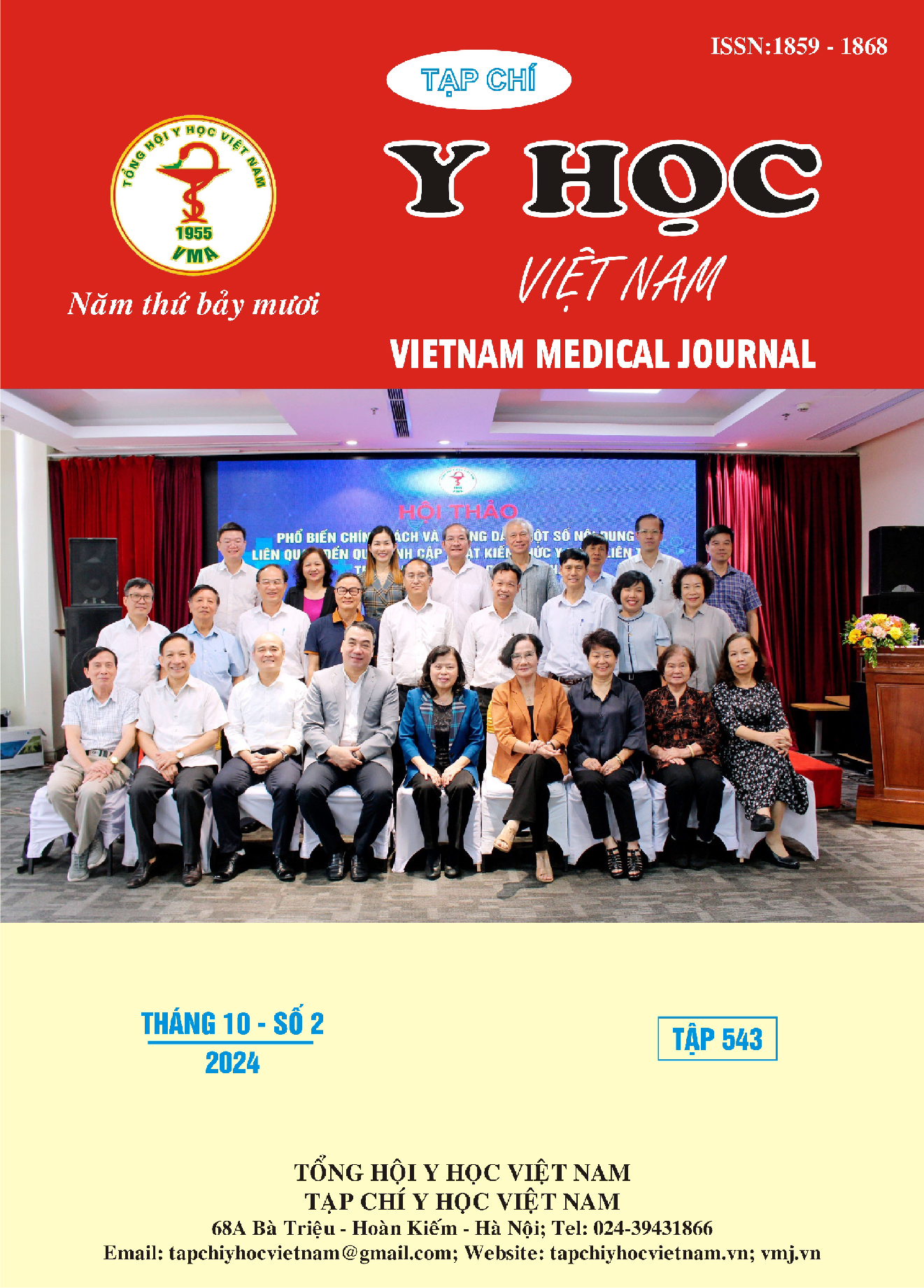THE CLINICAL AND LABORATORY MANIFESTATION IN SEVERE COVID-19 PATIENTS WITH HIGH-FLOW NASAL CANNULA
Main Article Content
Abstract
Using High-flow nasal cannula (HFNC) in severe COVID-19 patients helps to reduce the rate of invasive mechanical ventilation and mortality. Objectives: To describe clinical and laboratory manifestations as well as mortality among severe COVID-19 patients using HFNC. Methods: This was a retrospective study collecting and analyzing data of COVID-19 patients using HFNC from April, 2021 to December, 2023 in National Hospital for Tropical Diseases, Vietnam. Results: The average age was 65 ± 16.4 years old in which patients aged 61-80 was predominant. 71.1% patient had underlying diseases that hypertension (43.4%) and diabetes (25.3%) were the most common. The rate of success was 41%. Fever (57.5%) and dyspnea (88%) was the most common clinical symptoms. 71.1% patients suffered elevated D-dimer. 95% patients have lung damage on chest CT, mainly both lungs. At time T2, the breathing rate in the failure group was higher significant than the success group (p<0.05). SpO2, PaO2, and PaO2/FiO2 in the failure group were lower than the success group (p<0.05). The duration using HFNC in the success group was longer than the failure group. Conclusion: HFNC therapy showed an improvement in terms of clinical symptoms and blood oxygenation deficiency.
Article Details
Keywords
COVID-19, HFNC
References
2. WHO, COVID-19 Weekly Epidemiological Update_97. 2022. p. 23.
3. Rajesh T. Gandhi, M.D., M.D. John B. Lynch, M.P.H., et al., (2020). Mild or Moderate Covid-19. New England Journal of Medicine, 383(18), 1757-1766.
4. Le Pape, S., S. Savart, F. Arrivé, et al., (2023). High-flow nasal cannula oxygen versus conventional oxygen therapy for acute respiratory failure due to COVID-19: a systematic review and meta- analysis. Annals of Intensive Care, 13(1), 114.
5. Geng, S., Q. Mei, C. Zhu, et al., (2020). High flow nasal cannula is a good treatment option for COVID-19. 49(5), 444-445.
6. Duan, J., J. Zeng, P. Deng, et al., (2021). High-flow nasal cannula for COVID-19 patients: a multicenter retrospective study in China. 8, 639100.
7. Obradović, D., A. Milovančev, A. Plećaš Đurić, et al., (2023). High-Flow Nasal Cannula oxygen therapy in COVID-19: retrospective analysis of clinical outcomes – single center experience. Frontiers in Medicine, 10.
8. van Steenkiste, J., M.C. van Herwerden, D. Weller, et al., (2021). High-flow Nasal Cannula therapy: A feasible treatment for vulnerable elderly COVID-19 patients in the wards. 50(5), 654-659.
9. Xu, J., X. Yang, C. Huang, et al., (2020). A novel risk-stratification models of the high-flow nasal cannula therapy in COVID-19 patients with hypoxemic respiratory failure. 7, 607821.
10. Huỳnh Quang Huy and Trần Thị Uyên Phương, (2023). Đặc điểm cắt lớp vi tính ngực ở bệnh nhân COVID-19”. Tạp chí Y học Lâm sàng, 84(2023), 102-108.


